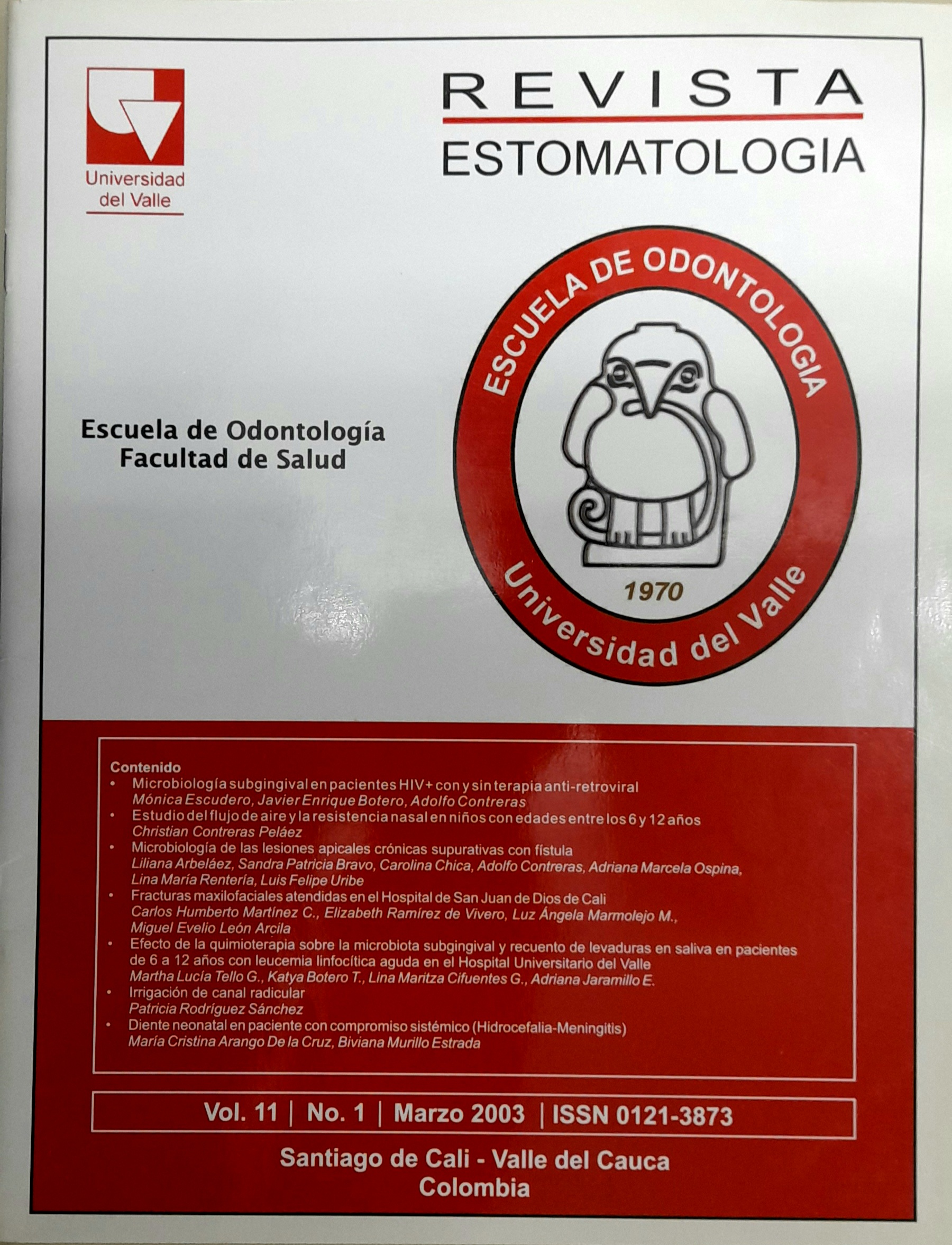Estudio del flujo de aire y la resistencia nasal en niños con edades entre los 6 y los 12 años
Keywords:
Respiración, Flujo de aire respirado, Neumotacografia, Resistencia nasalMain Article Content
There is a lack of studies that give relevant evidence of the possible relation between respiratory problems and impairment of craniofacial development. This study reports about the manufacture, calibration and validation of instruments that measure breathing flow, nasal resistance and pressure ofinhaled/expelled air in orderto quantifY the values of normal respiratory function. A device was prepared using an espirometer and a pneumotacograph integrated to traducers connected to a polygraph to evaluate the air flow, the nasal resistence, the equivalent area of transverse nasal section and the type ofbreathing (oral or nasal). There were obtained calibration curves to air flow and to pressure difference, with correlation coefficients (r) ofO.9997 and 0.9992, respectively.
Downloads

This work is licensed under a Creative Commons Attribution-NonCommercial-NoDerivatives 4.0 International License.
Los autores/as conservan los derechos de autor y ceden a la revista el derecho de la primera publicación, con el trabajo registrado con la licencia de atribución de Creative Commons, que permite a terceros utilizar lo publicado siempre que mencionen la autoría del trabajo y a la primera publicación en esta revista.

